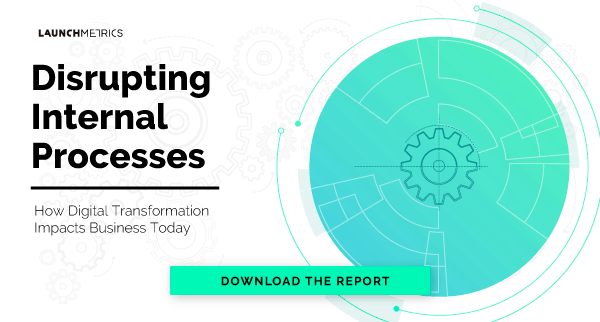More than just a buzzword, it’s time to accept that the digital transformation of businesses (DX) doesn’t have an expiry date and that it’s here for the long term. According to Accenture’s Technology Vision 2019 report, of those surveyed, 45% said: “the pace of innovation in their organizations has significantly accelerated over the past 3 years due to emerging technologies”. With these innovations, processes and data have become digitized and in doing so companies have been taking the steps to safeguard themselves for the future.
As we enter, what’s been coined as, the ‘post-digital’ era (meaning that we have come to accept that the adoption of digital technology is needed to remain relevant), businesses are being pushed to embrace DX as a means to hone frictionless processes to create frictionless experiences both internally and externally.
In this article you’ll learn…
Digital Business Transformation
Digital business transformation gives industries the chance to take a step back and reevaluate the way in which things should be executed to align the changes with business objectives. By doing so, they can optimize or create new internal processes to support the evolving business model and market needs. The fashion industry is no different and we’ve had reports of companies overhauling their business model from the inside out. A prime example of successful DX is UK online fashion retailer, Boohoo, who in September 2019 announced they’ve “topped £1bn over a 12-month period for the first time following what it described as an “outstanding” first half’”. Their deft approach to product testing and sample management has made it possible for the company to add about 200 new items to the website daily and maintain a high level of demand amongst their consumers.

As stated, rather than just converting everything to digital, DX is about making processes frictionless. By smoothing these processes out, a task that once took 5 clicks, for example, now takes only 1 click. In the case of the fashion industry, the use of RFID tags on samples helps the handler get real-time information on the device that they are using. Processes are made frictionless through the automation of data collection, analysis and sharing, so finding ways to streamline data management across multiple departments is essential.
Consumer Digital Transformation
But DX is not reserved solely for businesses; the consumer has been on their own digital transformation journey, and on it have garnered a vast understanding of new technology and increased expectations. Today, it is nearly impossible to interact with consumers without utilizing digital channels, and as these channels grow, so do the touchpoints. Marketing Week said, “there are 3 times more touchpoints along the customer journey than 15 years ago”. The one-size-fits-all approach to the consumer buying journey is a thing of the past, and a brand needs to be more agile in understanding their consumer to meet their demands.

Consumers, today, want to connect with companies on their own terms, which is why it’s pivotal to have an omnichannel presence that is personalized and responsive. The aforementioned increase in the number of touchpoints generates more data about the user, and intelligent data analytics can identify trends and send relevant content or information to the user based on user activity and preferences. H&M’s fashion advice forum called Itsapark is the perfect example of this. Launched in April 2019, it’s an online platform where users can give and receive advice on a range of topics, from what to wear to a job interview to how to accessorize a look. This touchpoint has created a space where consumers can share thoughts and opinions, and from which H&M can gather data about them.
The Glady Customer Expectations Report revealed that ‘71% of consumers want a consistent experience across all channels, but only 29% say they actually get it’. By having the technology in place to facilitate these exchanges, a frictionless consumer journey can be achieved and customer loyalty can be fostered.
A Frictionless Future
With digital transformation being as much about the journey of the consumer as it is the business, establishing an efficient internal digital transformation strategy is crucial. Optimizing the business for internal and external benefit will not only smooth out inefficiencies in internal processes and better the consumer-brand relationship. By pushing towards a frictionless future, companies can avoid monetary loss and pave the way to forging lasting consumer relationships.
To get deeper insights and learn more about digital transformation, download our new report Disrupting Internal Processes How Digital Transformation Impacts Business Today, featuring an exploration of the role of the CTO and case studies from industry leaders.

